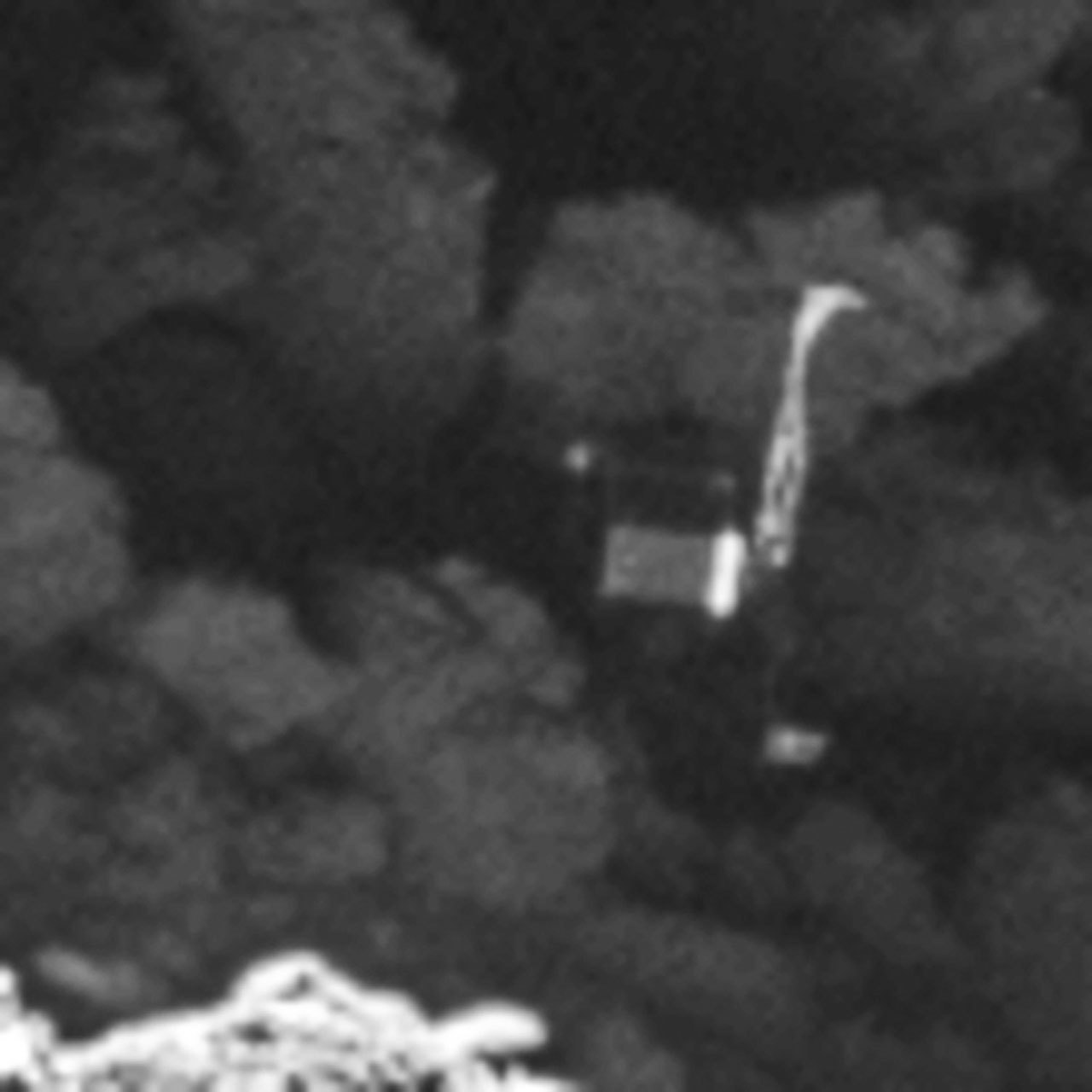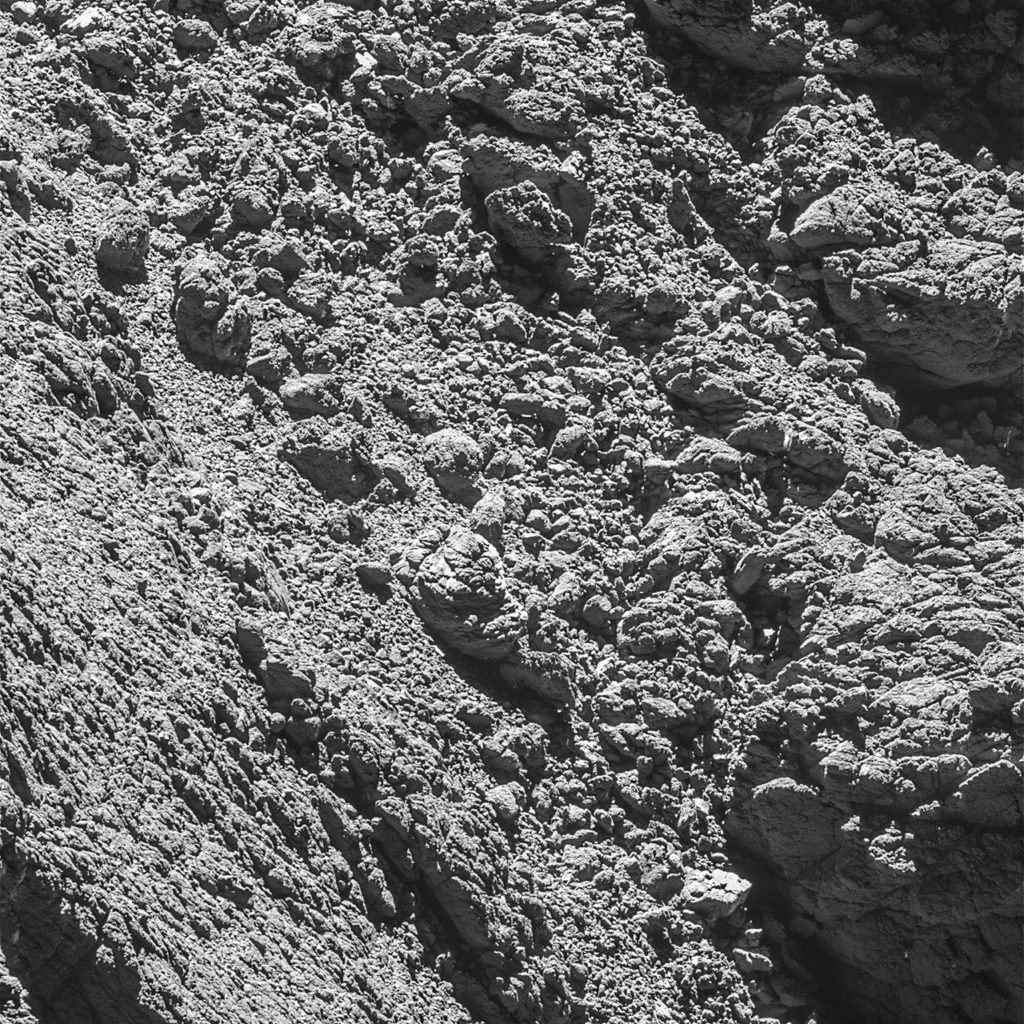By Sarah Kaplan
The Washington Post
The Philae lander made history in November 2014 when it became the first spacecraft ever to touch down on a comet and take pictures of what it saw. Then it vanished.
Although Philae was able to send just a few sporadic signals to its parent spacecraft, the Rosetta orbiter, indicating that it was still alive, scientists at the European Space Agency have been preparing for the end of their comet mission with the sad assumption that they would never see the pioneering little lander again. Rosetta stopped listening for its companion in July.
But on Friday the orbiter snapped a picture of Comet 67P/Churyumov-Gerasimenko, a chunk of ice and rock left over from the formation of the solar system. Sticking out of a shadowy crack on the surface was a small, dark, human-made object.
Philae has been found.
“With only a month left of the Rosetta mission, we are so happy to have finally imaged Philae, and to see it in such amazing detail,” Cecilia Tubiana, the first member of the Rosetta imaging team to see the pictures of Philae when they were downlinked this weekend, said in a news release.
The images illustrate why it’s been so hard to get a hold of Philae since its landing almost two years ago. The spacecraft is wedged beneath a large clump of rubble, its legs protruding uselessly like the limbs of an overturned bug.
During touchdown, anchoring harpoons and a thruster aimed at pinning the spacecraft to the comet’s surface failed to deploy properly, so it bounced away from its original landing site into that shadowy crack. Without direct access to sunlight, the lander couldn’t muster enough energy to communicate with the Rosetta orbiter; it managed to send just a few days worth of data over the course of more than 21 months.
“This wonderful news means that we now have the missing ‘ground-truth’ information needed to put Philae’s three days of science into proper context, now that we know where that ground actually is,” ESA project scientist Matt Taylor said in the news release.
Every bit of data and context from Philae is a boon to ESA scientists, who have been probing Comet 67P for clues to the early history of the solar system. Its icy interior contains molecules that are billions of years old and can illuminate what ingredients were around when planets were just being formed. Though the lander cannot work with the orbiter anymore, its discovery gives scientists the exact location where the earlier data and photos were taken.
The Rosetta team has been scouring the area where the lander was last seen to learn what exactly happened to the spacecraft. Radio ranging data helped narrow down the search area, and images taken by the Rosetta orbiter revealed several candidate objects. But the orbiter was too high above the comet, and the images too low in resolution, for scientists to be certain what they were looking at.
Time was running out: At the end of this month, Rosetta is scheduled to begin a swift descent toward the comet’s surface, snapping high resolution images and taking close-up measurements as it goes. Unlike Philae, Rosetta is not equipped for a “soft” landing; its arrival on Comet 67P will likely be a final, fatal crash.
“We were beginning to think that Philae would remain lost forever,” Rosetta mission manager Patrick Martin said. “It is incredible we have captured this at the final hour.”
Talk to us
> Give us your news tips.
> Send us a letter to the editor.
> More Herald contact information.



























